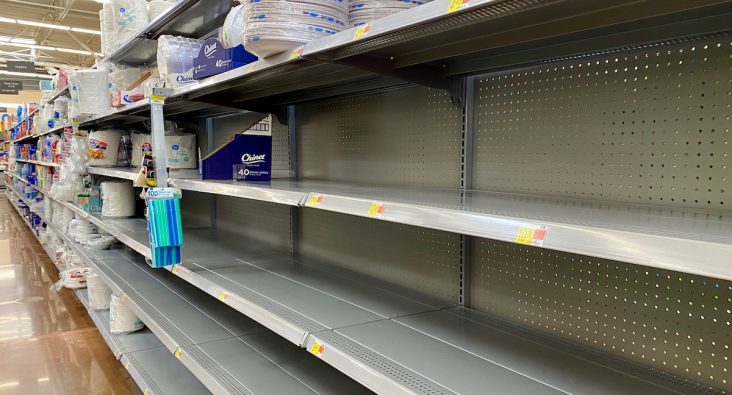Walmart CEO sees supply chain challenges, inventory shortfalls into 2022
by September 9, 2021 4:13 pm 21,534 views

Walmart CEO Doug McMillon said Thursday (Sept. 9) supply chain problems and inventory shortages are as stark as he can remember in his 30 years in retail. He spoke candidly about the retail business during the 28th Goldman Sachs Global Retailing Conference.
On a positive note, McMillon said consumers are still spending money and he expects that will continue through a strong holiday season for retail. On the low end of the economic spectrum, he said wages are rising and families want to celebrate again and they will find a way to do it.
McMillon said if he could have changed one thing ahead of the pandemic, it would have been to have more capacity for grocery pickup and delivery. He said many stores are still crowded with enough space to stage online orders as the demand for the service remains high. He said capital investments – $14 billion this year – announced in February are aimed at enhancing the supply chain, bringing more automation and streamlining the flow of products. He said micro fulfillment centers like the one attached to Store 100 in Bentonville will help get products people want closer to where they live and shop, reducing delivery costs and keeping customers happy.
McMillon said the supply chain Walmart built in the 1990s that included grocery and fresh foods was a huge head start for the retail giant as more consumers start to buy their food and other consumables online. In more recent years, Walmart added e-commerce fulfillment centers to the mix and automation is playing a much larger role. One area where he said Walmart is behind is the fulfillment capacity needed to grow its third-party marketplace. He said the investment earlier this year will help some, but it still won’t be enough.
“We want to grow our 3P marketplace aggressively, with some level of curation. That will be important to us long term. We see lots of potential,” McMillon said.
The growth has been constrained because of limited fulfillment capacity and Walmart’s vetting system. He said Walmart wants to ensure the seller offers a quality product and can deliver it to customers in a timely and easy manner.
While much of the conversation was around Walmart’s mega grocery business, McMillon said Walmart is working to gain and retain market share through inventory recovery and price gaps with competitors. He said market share gains will also depend on the impact of COVID-19 and future variants. McMillon said there is also potential online in the areas of apparel and home. He said the micro fulfillment centers will provide some capacity for 3P sellers, but that’s just a starting point.
He said imported inventory has also been a challenge and that includes home and apparel categories. McMillon credited the company’s buyers who he said continue to be creative in finding new suppliers when others can’t deliver. He said Walmart also leverages its scale and relationships to get products when others may have a harder time. That said, even Walmart does not have all the inventory it wants and can sell.
“We would take more inventory if we could get it,” he said.
